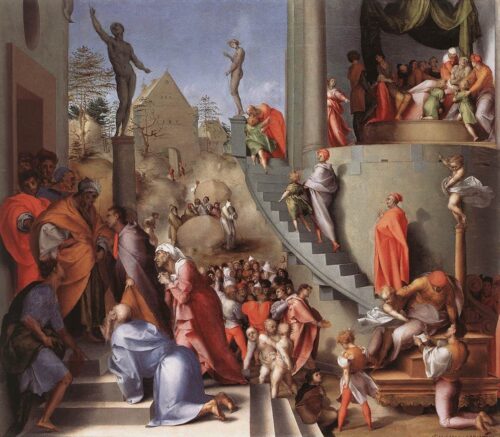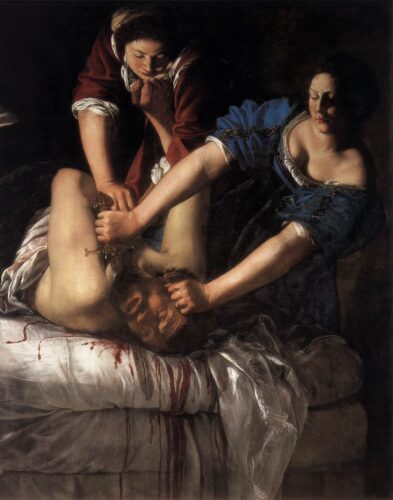The Van Gogh Museum had 366K in-person visitors in 2021. Meanwhile, the Vincent Van Gogh article on Wikipedia had that many views in one month alone. In an increasingly digital world, appreciators of European art young and old are flocking online to learn more. And they’re especially going to Wikipedia.
That’s why we’re thankful that students in our program work on updating Wikipedia’s coverage of art and art history each term. Looking back at work from just a few semesters ago, we can really understand the far-reaching impact that students have on public knowledge.

Public Domain.
Susan Lee’s student at Concordia College worked on the page about mannerism, a style of art that emerged in Renaissance Italy in the early 1500s, in her course on Renaissance and Baroque art. The student added a new section about common characteristics of artworks in this style, which differed greatly from the aesthetic norms of the Renaissance. A museum-goer might use the list to understand the significance of one work compared to another of a different style. The student also expanded information about notable artists that were drawn to the anti-classical tenets of mannerism, including Jacopo da Pontormo, his pupil Agnolo Bronzino, and Jacopo Tintoretto. The student contextualized their work in relation to the mannerism style and other arts of the period. Another student in the same course expanded Wikipedia’s coverage of cartography, adding detail about printing techniques in the Renaissance and the typical functions that maps of the period served. Since Susan Lee’s course ended in May 2019, 860K visitors have read the page about mannerism and 900K the page about cartography–all with these student contributions.

A student of Rachel Miller’s at California State University Sacramento worked on updating the Wikipedia entry for the famous Artemisia Gentileschi painting Judith Slaying Holofernes. You can see with our Authorship Highlighting that the student added analysis of what the painting depicts and how the subject Judith had been portrayed by Gentileschi’s Renaissance predecessors. The student also explained the personal connection that historians have drawn between this Judith and Gentileschi, proposing that Gentileschi represented herself as Judith here, referencing her own traumatic experience at the hands of her mentor. Since the student made these additions in May 2019, the page has received 400K views with spikes in views in July 2020 when Italian authorities blocked the attempted illegal sale of one of Gentileschi’s paintings and in October 2020 when a long-lost work was discovered in the aftermath of the Beirut explosion.
Another student, three years earlier in Jo Ann Griffin’s course at the University of Louisville, had expanded the section about feminist historical perspectives on Gentileschi’s career in her biography page. They added that critical reception of the Judith Slaying Holofernes work was influenced by the artist’s gender and that centuries later we can now point to the many barriers women artists of the time faced. This Wikipedia biography has received 2 million views since the student made these edits, including a spike of 60K views in one day when she was featured as a Google Doodle in 2020.
In a Wikipedia assignment, students hone their research and writing skills and they engage in an endeavor that feels purposeful. They create a lasting contribution to openly available resources and take evident pride in their work. The lasting effects for Wikipedia, and art appreciation in general, are positive. History is preserved and thousands around the world can learn about these works without needing access to paywalled journals or a plane ticket to museums across the globe.
Learn more about incorporating a Wikipedia assignment into your course of any discipline at teach.wikiedu.org.
